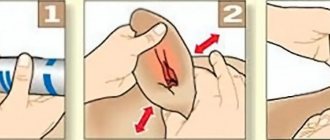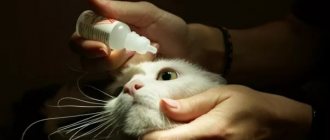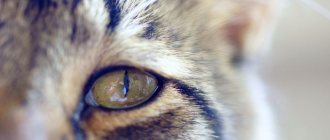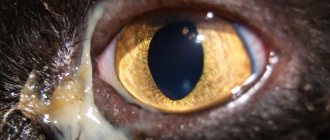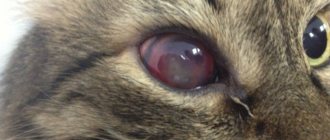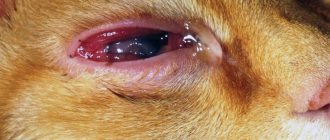Here are some common causes of cat eye discharge:
Feline upper respiratory tract infections
A common cause of discharge is feline calicivirus, infectious respiratory disease, pneumonitis or rhinotracheitis (herpes virus), bacteria and protozoa.
Symptoms can be mild or progress to very severe and may include a sticky, purulent discharge.
Conjunctivitis (pink eye)
Inflammation of the light pink lining around your cat's eye, conjunctivitis can cause one or both of your cat's eyes to become red and swollen, become light-sensitive, and have clear, watery, or thick mucus discharge from the eyes.
Conjunctivitis with fever, diarrhea and difficulty breathing may indicate potentially fatal feline infectious peritonitis, although this is not very common.
Corneal diseases
A cat's cornea, the dome-shaped surface covering the front of the eye, can become inflamed, injured, or ulcerated. The result may be cloudiness, excessive blinking, inflammation, and increased tear production.
Watery eyes (epiphora)
Blocked tear ducts, excessive tear production, allergies, viral conjunctivitis, and more can be the cause of your cat's abnormal tearing.
Uveitis
Inflammation of the internal structures of the eye, injury, cancer, immune problems, or infections can cause severe, often painful uveitis.
Dry eye (keratoconjunctivitis sicca)
Chronic lack of tear production and dryness can lead to inflammation of the cornea, red eyes and, if left untreated, blindness. The absence of the watery part of tears can lead to yellow, sticky discharge from the eyes.
Other causes of discharge include allergies, something stuck in the eye, or problems with the third eyelid.
Prevention of eye diseases in cats
Prevention of eye diseases consists of the following actions:
- do not smoke in the room where the pet lives, avoid using perfumes and household chemicals;
- use hypoallergenic ready-made comas of at least premium class;
- destroy ectoparasites and conduct quarterly deworming;
- Vaccinate your pet regularly according to the vaccination plan.
- cats predisposed to eye diseases are periodically instilled with prophylactic agents.
Be sure to read:
The cat is coughing and wheezing, how to treat it at home
Eye diseases or digestive disorders are caused by human food, so giving your pet a treat can result in illness.
When to contact a veterinarian
Your cat's eyes are as gentle as they are beautiful. Small problems can quickly develop into serious ones. If your cat's eye discharge symptoms do not go away within 24 hours or if your cat squints, contact your veterinarian immediately.
If you have any medications left over from a previous eye problem, do not use them on your cat's eyes.
Different eye problems require different medications, and you may end up causing serious injury by taking the wrong medication.
Symptoms
By the appearance of the discharge, you can determine the cause of the pathological process:
- purulent, yellow or greenish in color - infections or allergies;
- brown – obstruction of the nasolacrimal duct;
- white, opaque – cat flu, most often in kittens;
- colorless, watery - a natural reaction to external stimuli.
Mechanical damage also cannot be ruled out, but in this case the cause of the discharge is obvious. In this case, there may also be brown discharge due to a large amount of dust or injury to the cornea.
Only a veterinarian can determine the specific culprit factor after examining the animal.
Home Care: Tips to Keep Your Cat's Eyes Healthy
You can help avoid eye problems in your cat by upgrading to annual vaccinations, avoiding kitten overcrowding, and checking your cat's eyes frequently for redness, cloudiness, changes in color or shape, discharge, or sensitivity to light.
To safely remove your cat's secretions and make them more comfortable while waiting for a visit to the vet, arm yourself with a pack of cotton balls and these simple tips from the ASPCA:
- Dip a cotton pad into water. Wipe the discharge from the eye, always with the edge of the eye facing outwards. Use a fresh cotton pad for each eye.
- Stay away from any over-the-counter drops or detergents unless prescribed by your veterinarian.
Because proper treatment can be critical to your cat's health and well-being, always consult with your veterinarian to ensure your kitten is receiving the right care.
Treatment
The main therapy is aimed at getting rid of the root cause. Depending on the irritant, additional procedures are prescribed. Comprehensive help to relieve inflammation and stop the flow of discharge, excessive tearing - drops with an antibacterial effect and rinsing.
How to wash your cat's eyes:
- clean warm water;
- strong tea;
- chamomile decoction;
- furatsilin solution;
- boric acid solution.
How to properly rinse:
- It is advisable not to do this alone, because the animal will resist and will need to be held. This is especially true for paws, otherwise everything will end... bloody.
- First prepare a cotton swab soaked in the liquid you are going to use to wash your eye.
- Squeeze the substance into the cat's eye.
- If the eyelids are stuck together because the discharge has dried out and set into a crust, you need to apply a swab moistened with liquid to the eye and wait a little for the crust to liquefy. There is no need to forcefully rub your eye to remove the crust. It’s better to wait and calmly remove it in a soft state. Soak the glued eyelashes with movements in the direction from the nose to the corner of the eye along the eyelash growth line and to the ears, and only then rinse the organ of vision itself.
The solution should be warm - more effective. After rinsing, gently wipe your cat's eyelids with a dry swab.
Discharge after pregnancy
The presence of bloody discharge in a pregnant cat is completely normal when it is presented as transparent, homogeneous, odorless clots.
However, prolonged discharge of purulent-bloody discharge with a greenish tint after birth indicates possible inflammation of the animal’s genital organs.
It often happens that the fetus gets stuck in the cat's womb, or the placenta for some reason does not come out of the uterus, as a result of which the process of rotting begins. In both cases, surgical removal of the foreign object will be required, because prolonged decomposition inside the animal's body can lead to intoxication of the pet.
Sometimes bloody discharge during the postpartum period may be just remnants of the placenta. Usually the placenta is completely expelled from the uterus within 3 hours after birth, and the number of membranes should correspond to the number of kittens. In this case, surgical intervention is not required.
Pyometra
Among the most common diseases of cats with bloody discharge is pyometra, a form of purulent endometritis in which pus accumulates in the uterine cavity. The disease is most often provoked by rash actions of the owners themselves, namely:
- abuse of hormonal drugs during estrus;
- uncontrolled mating;
- infection in the vagina during childbirth.
There are two types of pyometra:
- Open form - blood clots come out of the vagina. The cat licks itself frequently, approximately every 15-20 minutes. The animal's temperature rises, the cat often drinks water.
- Closed form - no discharge visible, because blood accumulates in the uterine cavity. Symptoms of the closed form of pyometra: enlarged, tight abdomen, frequent urination, apathy, rapid breathing.
Of these two forms, the second poses the greatest threat to health, because. excessive accumulation of pus in the uterus can lead to the death of the animal.
Eyes fester
Does your cat have brown, hard discharge in her eyes? This is dried pus. What to do if your cat's eyes are infected? First of all, it is necessary to establish the cause. Most likely it is bacterial conjunctivitis.
To definitely find out this, it is necessary to undergo bacterial culture tests. This is done in a veterinary clinic. A swab is taken from the cat's eye. There is no need to panic, this is a quick procedure. The pet won’t even have time to feel anything.
It happens that only one eye of a cat festeres. In this case, a foreign body is likely to enter it, which leads to an inflammatory process.
Diagnostics
With severe hyphema, when the spilled blood fills the entire volume of the anterior chamber of the eye, its diagnosis is not difficult, since it is easily visualized. If intraocular hemorrhage is suspected, it is necessary to identify the cause of the incident. If a recent injury or eye surgery is mentioned, this may be the likely cause of the pathological condition.
If there were no external factors, it is necessary to exclude other causes of hyphema: systemic diseases, taking substances and drugs that thin the blood. To do this, the patient is prescribed a laboratory blood test for coagulation - a coagulogram.
Symptoms of demodicosis
Demodicosis manifests itself in 2 forms: the skin form of the disease and demodicosis of the eyelids .
With the cutaneous form of demodicosis, inflammation appears on the skin of the face, the chin, cheeks and brow ridges are especially affected. The skin of the chest and back is much less commonly affected. The main symptom of the cutaneous form of demodicosis is inflammation of the sebaceous glands and hair follicles, which leads to the formation of acne, redness of the skin and the formation of crusts.
Symptoms of demodicosis of the eyes may be as follows:
- itching and burning at the base of the eyelashes;
- eyelashes sticking together in the morning;
- rapid eye fatigue;
- dry eye syndrome;
- yellowish mucus in the eyes;
- sensation of a foreign body in the eye.
Symptoms may worsen in the morning, as well as after taking a hot bath, visiting a bathhouse or sauna, or being in the sun.
If such symptoms are detected, you should urgently consult a dermatologist (in the case of the skin form of the disease) or an ophthalmologist (in the case of eye demodicosis): the disease is contagious and quickly spreads to neighboring areas.
1 Diagnosis and treatment of demodicosis
2 Diagnosis and treatment of demodicosis
3 Treatment of demodicosis
What is the diagnosis of eye demodicosis based on?
An experienced ophthalmologist conducts special laboratory tests to identify Demodex mites, and also pays attention to the visible characteristic signs of eye demodicosis:
- redness along the edges of the eyelids;
- pustules between eyelashes;
- sticky eyelashes with a yellowish coating and scales;
- dilated capillaries of the eyelids and retina;
- thinning and frequent loss of eyelashes.
Causes
Discharge in cats is usually a symptom or sign of an underlying disease, infection, or other condition. However, there are several common causes of vaginal bleeding in cats.
Estrus
There are still many people who wonder if cats have periods as they tend to compare periods to dogs who bleed during their heat. Dogs and cats may be similar in some ways, but they are different species with big differences, and this is one of them.
Cats don't bleed when they're in heat, so if you've seen your cat soil brown or reddish fluid or have blood when urinating, it means you're dealing with a medical condition. Next, we will talk about the main causes of bleeding in cats.
© shutterstock
Cystitis
This is an inflammation of the bladder that can be caused by a urinary tract infection, bacterial overgrowth, kidney disease, and even injury such as stroke.
When a cat has cystitis, abnormal behavior such as restlessness and nervousness may be observed, especially when using the litter box. We can also hear her meowing, which is her way of complaining about the discomfort caused by her illness. Similarly, in some cases, we can observe that he urinates uncontrollably all over the house as he is unable to properly control urination at the designated place.
Typically in cases of cystitis we observe the presence of fresh blood in the urine and the presence of bacteria under a microscope. This pathology usually has a good prognosis, because cystitis is easily treated with antibiotics, which should be prescribed by a veterinarian.
Pyometra
This is an infection in which pus accumulates inside the uterus. Feverfew in cats is extremely dangerous and can be fatal if not treated promptly. It usually affects cats over 8 years of age who have not been spayed or young cats who have received hormone therapy to stop being in heat.
The disease occurs due to a bacterium that the cat reduces during the estrus phase in which she takes the animal, because at this time it is easier to cross the cervix and take up residence inside. There are two types of feverfew: closed, in which the pus is not expelled and the uterus can burst, causing peritonitis, and open, which, among other things, is characterized by bleeding with pus, dehydration, frequent urination and lethargy.
Miscarriage
If your cat is pregnant and you notice she is bleeding from her vulva, she may be miscarrying. Depending on how far along in pregnancy she is, your cat will be at different risks if she miscarries.
When this occurs during the first few weeks of pregnancy, it may be due to the death of one of the puppies. At this stage, when the fetus is still poorly formed, most cats' bodies will simply absorb the tissue and the chances of complications are low.
If a miscarriage occurs mid-pregnancy, the mother and other puppies may be at risk. At this stage, the miscarriage may be spontaneous due to injury, severe infection of the uterus, or other reasons.
In both cases, a veterinarian must be contacted to perform the necessary tests to ensure the health of the parents and the unarrived puppies. Most likely, a specialist will need an ultrasound or x-ray to assess the condition of the pregnancy.
Birth
When it's time for a cat to give birth, bleeding from the vulva is normal. If you have been tracking your pregnancy, it will be easy to determine if you are close to your due date. Remember that this can happen on certain days and even a week in advance.
Before giving birth, not only will the cat have bleeding from the vulva, but you will also see that she becomes more restless, she will look for a "nest" for protection and expel mucus, which is a mucus plug indicating that labor has already occurred.
Stones in the kidneys
Kidney stones are a frustrating health problem for felines. They cause painful urination and are very dangerous. One of the symptoms of its presence is bloody discharge, as a tiny stone can become “stuck” in the urinary tract, which causes pain when urinating.
The appearance of kidney stones has several causes, but one of the most common is diet. A diet high in saturated fat and flour will cause these types of problems, which is why it is so important to provide our cats with quality food.
© shutterstock
Injury
This name is given to shocks that a cat may be subjected to and which have negative consequences for its body. They can occur after a fight with another cat or after a fall and cause organ damage, leading to bleeding. When this happens, it is common for your cat to bleed from the vulva and other parts of the body. In some cases, you may find bruise-like marks on your body, while in others you may not.
Injuries are very dangerous, as they are associated with possible damage to vital organs, as well as internal effusions. If you suspect your cat has suffered such impacts, do not hesitate to go to the vet immediately.
Tumors
A tumor is an abnormal growth of tissue anywhere in the body. This may be in areas that affect the kidneys, reproductive system or urination, in which case your cat will have bloody discharge. It is important to note that most tumors, benign or malignant, are not visible at first glance, so only a veterinary examination with appropriate testing will help determine whether this is the cause of the bleeding and the nature of the tumor.
